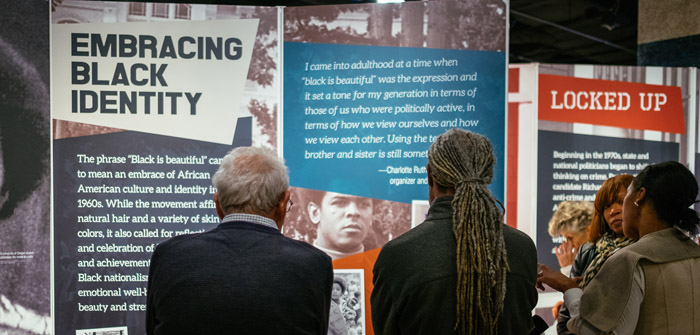(Photos | Courtesy of Oregon Historical Society)
With museums currently closed throughout Oregon, the Oregon Black Pioneers and the Oregon Historical Society (OHS) are excited to invite the community to “visit” its new virtual exhibit, Racing to Change: Oregon’s Civil Rights Years, now available on both institution’s websites at ohs.org/racingtochange and oregonblackpioneers.org.
On view at the Oregon Historical Society in downtown Portland from January through June of 2018, this popular exhibit illuminates the Civil Rights Movement in Oregon, a time of cultural and social upheaval, conflict and change.
The launch of this virtual exhibit marks nearly a decade of partnership between OHS and the Oregon Black Pioneers. Since 2011, the Oregon Historical Society has proudly hosted four exhibitions curated by the Oregon Black Pioneers, sharing the history of Oregon’s black community spanning from 1788 through the 1970s. Through their exhibitions, the Oregon Black Pioneers, a volunteer run organization, strives to educate individuals about the essential role that African Americans played in building the social, cultural and economic base of Oregon.
Using Visiting Media TrueTour™ technology and a computer or tablet, visitors can virtually “walk” through the exhibit, experiencing all of the artifacts and interpretive panels from the original physical exhibit, as well as new digital enhancements. The virtual exhibit features short video interviews with co-exhibit project leader and Oregon Black Pioneers board member Gwen Carr, providing an added perspective on the stories shared in the exhibit. Additional educational resources developed and featured on the website are specially designed to support educators and students as they explore this virtual exhibit.
While the 1960s and 1970s was a period of cultural upheaval, it was also an era of celebration, experimentation and achievement for African Americans. Through the Civil Rights Movement, young people made their voices heard and became catalysts for change within their communities. This exhibition also shares how established, vibrant black communities held together in the face of public works funded demolition of homes and businesses, disruptive school integration measures and other challenges.
“Racing to Change addresses the challenges facing Oregon’s African American community during the 1960s and 1970s and highlights the events, people and organizations that made up the Civil Rights Movement during that era. It seeks to educate and engage visitors of all ages and backgrounds and challenge them to reflect on the current racial environment and make choices for positive change today,” said Carr.

